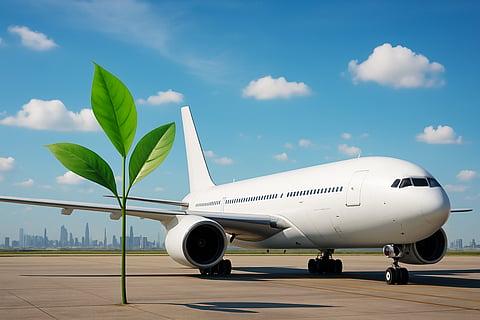Charting a Sustainable Flight Path: The Middle East’s Aviation Revolution
As the aviation industry faces increasing pressure to curb emissions and reduce its environmental impact, airliners in the Middle East are charting a bold and innovative path toward sustainability.
From investing in Sustainable Aviation Fuel (SAF) to modernizing fleets and adopting green ground services, the region is fast becoming a global leader in eco-friendly aviation practices.
Sustainable Aviation Fuel: Turning the Tide
One of the most transformative developments in the Middle East’s aviation sector is the adoption of Sustainable Aviation Fuel (SAF). Emirates has been a trailblazer, operating its first test flight using 100% SAF in 2023 and following up with a commercial flight from Dubai to Sydney powered by SAF blends. Collaborations with global energy giants like Neste and Shell have strengthened the airline’s efforts.
SAF can reduce carbon emissions by up to 85% over its lifecycle compared to traditional jet fuel. Despite high production costs and limited supply, regional carriers continue to invest, recognizing SAF as a critical component of future flight operations.
Fleet Modernization and Operational Efficiencies
Fleet renewal is another cornerstone of Middle Eastern airlines' sustainability strategies. Emirates boasts one of the youngest fleets in the world, with an average aircraft age of just 6.4 years—significantly younger than the global average of 11.3 years. This modernization leads to improved fuel efficiency and lower emissions per passenger-kilometer.
Innovative operational practices have also contributed to major environmental savings. Emirates has introduced Green Standard Operating Procedures (SOPs) that include reduced taxi time, direct flight routing, and optimized climb and descent. These measures saved over 160,000 tonnes of CO₂ and 50,000 tonnes of fuel in a single year.
Recycling, Circular Economy, and Waste Reduction
Sustainability efforts extend beyond the skies. Saudi carrier flynas has partnered with the Saudi Investment Recycling Company (SIRC) to manage and recycle aircraft materials including plastic, oil, and batteries. This aligns with Saudi Vision 2030’s push for a circular economy.
Etihad Airways has also taken steps to reduce plastic use onboard, introducing sustainable amenity kits and recyclable service items. Similarly, Jazeera Airways in Kuwait has switched to biodegradable cutlery made from date palm leaves—reducing plastic waste by 300 kg monthly.
Innovating Through Biofuel and Regional Partnerships
The development of biofuels is gaining traction across the Gulf. The Qatar Advanced Biofuel Platform (QABP), a partnership between Qatar Airways, Airbus, and Qatar Petroleum, is working on algae-based biofuel technologies. Meanwhile, Etihad is exploring SAF derived from municipal waste and renewable hydrogen through partnerships with Masdar and ADNOC.
Qatar is also home to the Global Carbon Council, a CORSIA-recognized carbon crediting body that supports airlines in offsetting emissions through credible regional projects.
Green Airports and Ground Services
Sustainability isn’t limited to the skies. Airports in the Middle East are implementing green policies and technologies to reduce their environmental impact. Dubai International Airport (DXB) has achieved ACI Level 4 “Transformation” accreditation, while Hamad International Airport in Doha is known for its green spaces, waste recycling, and full wastewater reuse.
On the ground, Dnata—a major airport services provider—has committed to electric vehicle use, solar power, and zero-emission aircraft turnarounds at key hubs in the UAE and the US.
Conclusion: A Model for Global Aviation
The aviation industry accounts for roughly 2-3% of global CO₂ emissions, and while that number may seem modest, its environmental impact is disproportionately high due to altitude effects and persistent growth in global air travel.
By investing in SAF, embracing innovation, and building collaborative partnerships, Middle East airlines are setting a benchmark for sustainable aviation. Though challenges remain—such as SAF affordability and the need for more robust infrastructure—the momentum is undeniable.
The skies are greener over the Middle East, and the region is flying high toward a cleaner, more sustainable future.


